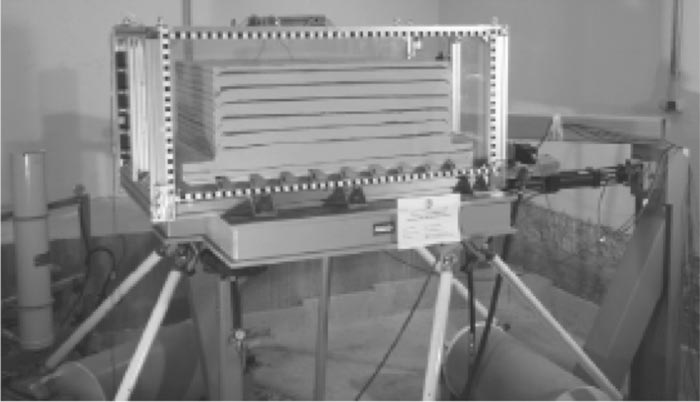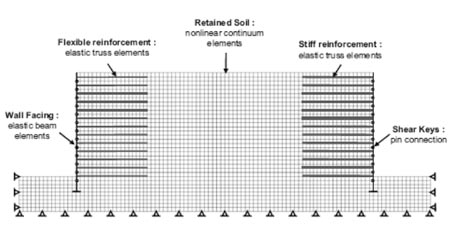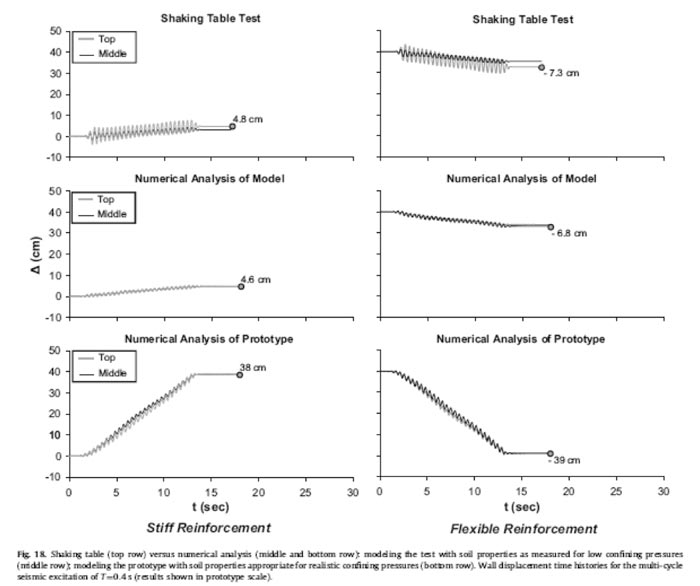Nonlinear Response of Deep Immersed Tunnel to Strong Seismic Shaking
Critical for the seismic safety of immersed tunnels is the magnitude of deformations developing in the segment joints, as a result of the combined longitudinal, transversal, and vertical seismic excitation , since it may lead to decompression of the joint gaskets, jeopardizing the water tightness and, hence, the safety of the tunnel. The Lab has thoroughly dealt with the problem of analysis and design against such vibrations, with reference to a proposed 70 m-deep immersed tunnel in a highly seismic region, in Greece. The multisegment tunnel is modeled as a beam.
Connected to the ground through properly calibrated interaction springs, dashpots, and sliders. Actual records of significant directivity affected ground motions, downscaled to 0.24 g peak acceleration, form the basis of the basement excitation. Free-field acceleration time histories are computed from these records through one-dimensional wave propagation equivalent-linear and nonlinear analyses of parametrically different soil profiles along the tunnel; they are, then, applied as excitation at the support of the springs, with a suitable time lag to conservatively approximate wave passage effects. The joints between the tunnel segments are modeled elastically with special nonlinear hyperelastic elements, while their longitudinal prestressing due to the great 7 bar water pressure is also considered. Nonlinear dynamic transient analysis of the tunnel is performed without ignoring the inertia of the thick-walled tunnel, and the influence of segment length and joint properties is investigated parametrically.
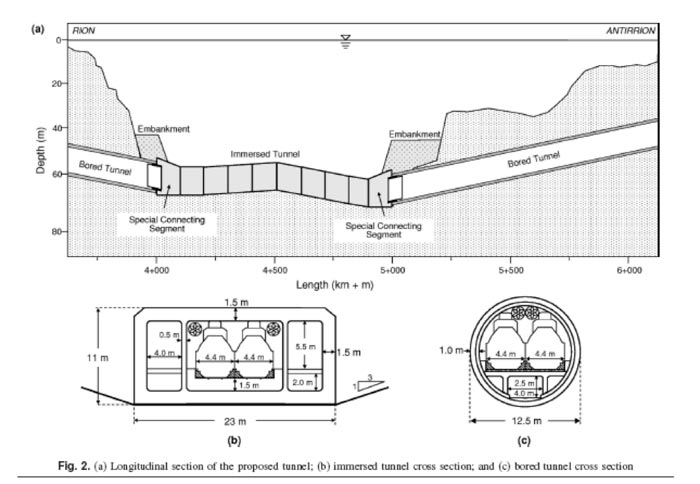
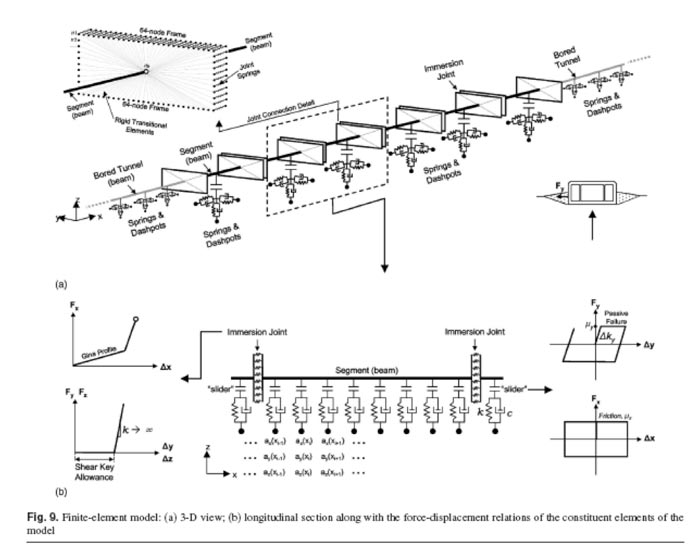
Behaviour of deep immersed tunnel under combined normal fault rupture deformation and subsequent seismic shaking
The Lab investigated numerically the response of a future 70m deep immersed tunnel to the consecutive action of a major normal fault rupturing in an earthquake occurring in the basement rock underneath the tunnel, and a subsequent strong excitation from a different large-magnitude seismic event that may occur years later.
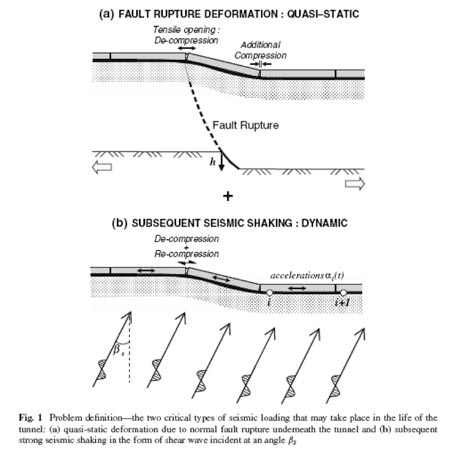
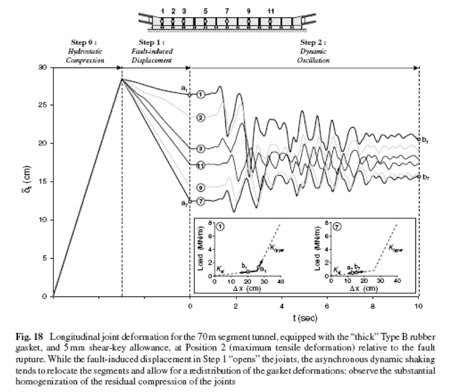
Analysis of cut-and-cover tunnels against large tectonic deformation
Tunnels are believed to be rather “insensitive” to earthquakes. Although a number of case histories seem to favor such an argument, failures and collapses of underground structures in the earthquakes of Kobe (1995), Düzce–Bolu (1999), and Taiwan (1999) have shown that there are exceptions to this “rule”. Among them: the case of tunnels crossed by fault rupture. The analysis and design of two highway cut-and-cover tunnels in Greece against large tectonic dislocation from a normal fault are presented herein. The analysis, conducted with finite elements, places particular emphasis on realistically modeling the tunnel-soil interface.
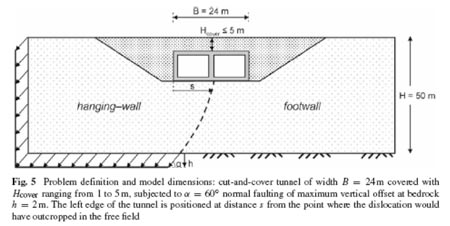
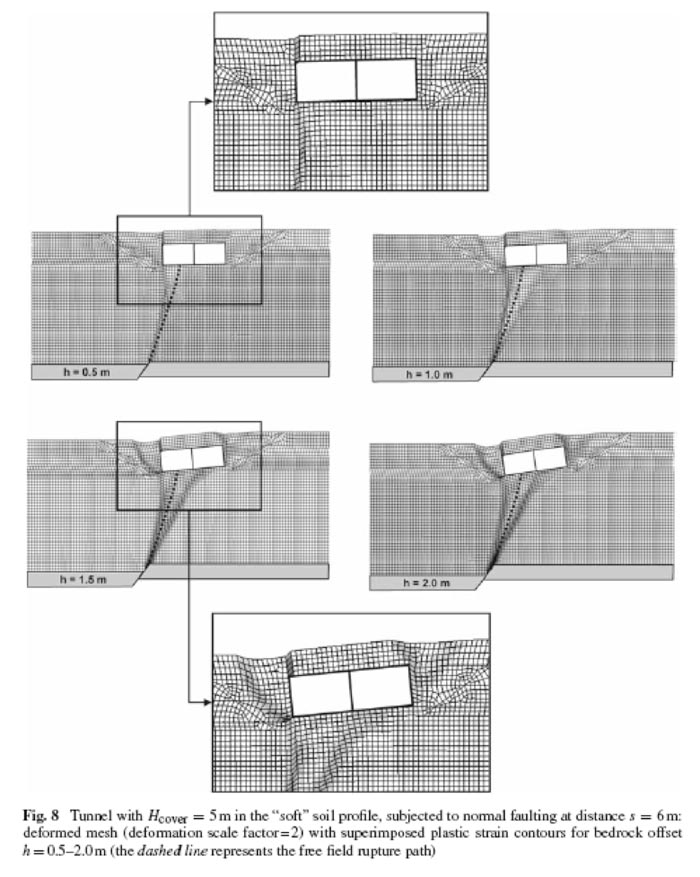
Seismic performance of bar-mat reinforced-soil retaining wall: Shaking table testing versus numerical analysis with modified kinematic hardening constitutive model
Reinforced-soil retaining structures possess inherent flexibility, and are believed to be insensitive to earthquake shaking. The Lab investigated experimentally and theoretically the seismic performance of a typical bar-mat retaining wall. After calibrating the model parameters through laboratory element testing, the retaining walls are analyzed at model scale, assuming model parameters appropriate for very small confining pressures. After validating the numerical analysis through comparisons with shaking table test results, the problem is re-analyzed at prototype scale assuming model parameters for standard confining pressures. The results of shaking table testing are thus indirectly ‘‘converted’’(extrapolated)to real scale.
